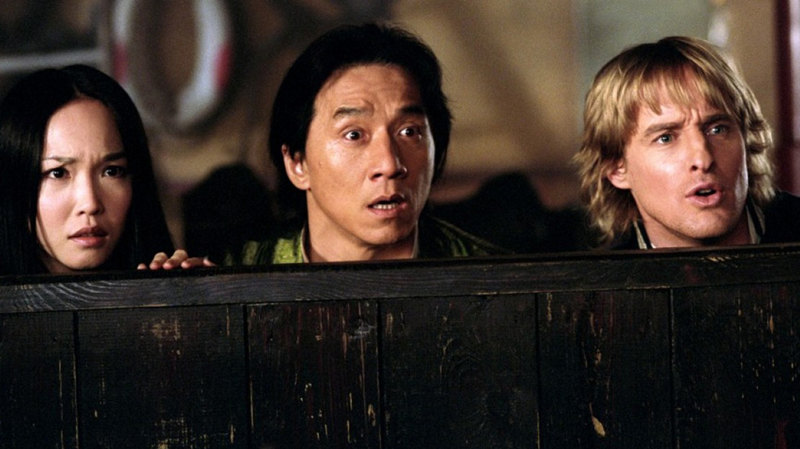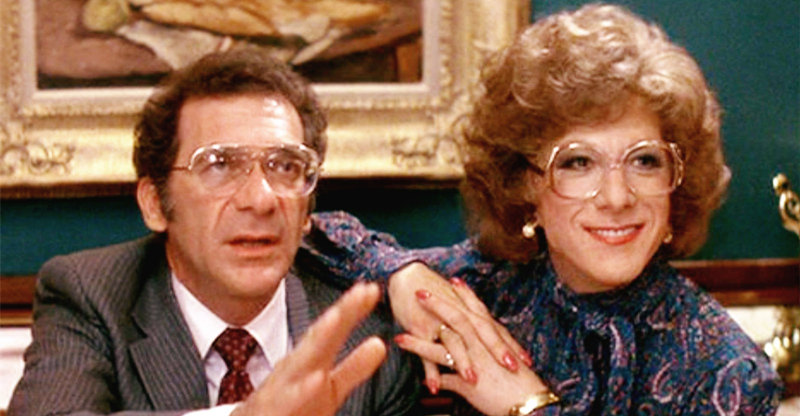“Hazel” was a half-hour situation comedy that aired on NBC from September 1961 to September 1965. Hazel Burke (Shirley Booth) was a live-in maid and housekeeper who has been a part of George Baxter’s life since he was a little boy. Now he’s a successful corporate attorney with a wife (Whitney Blake as Dorothy) and son (Bobby Buntrock as Harold). But while George (Don DeFore) is a big shot at work and Hazel’s employer, at home he’s not nearly as “in control” as the outspoken Hazel, who called him “Mr. B.,” his wife “Missy,” and the boy “Sport.” The dog Smiley got to keep his name.
Booth won an Emmy for her performance this season, in which many episodes give Hazel the chance to lock horns with Mr. B. and to dispense her folksy wisdom through ungrammatical language.
Based on the Saturday Evening Post cartoon series by Ted Key, “Hazel” aired at 9:30 p.m. ET opposite “The Nurses” and “McHale’s Navy” its second season and finished at Number 15 in the Nielsens behind Number 1 show “The Beverly Hillbillies” and the sitcoms “The Lucy Show,” “The Andy Griffith Show,” “The Danny Thomas Show,” and “The Dick Van Dyke Show.”
But time hasn’t been kind to “Hazel,” which hasn’t aged as well as those other shows. Though Hazel is a strong and opinionated woman, she’s also the source of humor and comes across as a caricature. Plus, there are so many sexist elements in the series that the show suffers now, as a result. If anyone draws a contemporary viewer’s sympathy, it’s Whitney Blake, an interior designer who’s little more than window dressing herself.
She wasn’t alone. This was a satellite show in which every episode revolved around Hazel and every character was written so that Hazel could play off of him or her. Bobby Buntrock had as little to do as his TV mom, and the only direction he appears to have been given was to “look cute.” In Miss Hazel’s Neighborhood other characters popped in briefly to give her a chance to advise them. Today, we’d call her a know-it-all or a busy-body, but mail carrier Barney Hatfield (Robert Williams) loved her, taxi-driver Mitch Brady (Dub Taylor) loved her, and fellow maid Rosie (Maudie Prickett) loved her. The show could have been called “Everybody Loves Hazel.”
Curiously, even though Alice on “The Brady Bunch” also wore a uniform, there’s less of a feeling of family with Hazel and the Baxters. There’s always a sense of employer and maid/housekeeper, and also a kind of staged quality to the episodes.
A little perspective, though. Booth was trained in the theater and won a Tony Award in 1950 for her performance in “Come Back, Little Sheba,” then won an Academy Award two years later for the film adaptation. As Hazel, she earned back-to-back Emmys. She’s a quality dramatic actress who made the leap to comedy by creating a character who was opinionated, domineering, folksy, and caring. Hazel talked a mile a minute, and you got the feeling that listening wasn’t her strong suit—which, of course, drove Mr. B. crazy. But it was tough for anyone not to like Hazel, because her heart was always in the right place.
Thirty-two episodes are included on four single-sided discs and contained in a standard-size keep case on plastic “pages.” There’s no booklet this time, as the episodes and very brief annotations and air dates are printed on the inside cover:
- “Hazel’s Cousin.” Hazel learns that her successful cousin Sybil is going to be married.
- “Rosie’s Contract.” Rosie gets a contract, and Hazel thinks she should get one too.
- “We’ve Been So Happy Till Now.” When the Baxters are arguing, Hazel thinks she has the solution.
- “How to Lure an Epicure.” George and Dorothy try to influence a newspaper columnist.
- “Barney Hatfield, Where Are You?” The mailman seems to have disappeared, and Hazel fears the worst.
- “A Four-Bit Word to Chew On.” Hazel works on her vocabulary, leaving Mr. Griffin (Howard Smith) feeling inferior.
- “Hazel’s Tax Deduction.” The IRS questions Hazel’s deductions.
- “Mr. B. on the Beach.” A judge’s health forces him to retire, and George may be in line to succeed him.
- “License to Wed.” Hazel’s nephew is engaged to George’s niece, until Hazel gets involved.
- “Genie with the Light Brown Lamp.” When Harold’s dog is lost, he places his hope in a gravy boat that he supposes is a genie in a bottle.
- “The Natural Athlete.” A bowling tournament pits George against Hazel.
- “New Man in Town.” Hazel and Rosie compete for a new chauffeur.
- “Herbert for Hire.” Hazel attempts to persuade Mr. Griffin to hire their financially troubled neighbor.
- “Hazel and the Lovebirds.” Hazel’s nephew and George’s niece are the target of a break-up attempt, this time the effort coming from George’s sister, Deirdre (Cathy Lewis).
- “Top Secret.” Hazel walks into a senator’s office with a young girl and walks out of his office with some top-secret papers.
- “The Sunshine Girls Quartet.” The Sunshine Girls enter a song festival, but the audition falls on the same night as a reception for Mr. Griffin.
- “A Good Example for Harold.” Hazel makes George and Dorothy tell the truth at all times.
- “Hazel’s Highland Fling.” When Mr. Griffin is unhappy with his newly hired cook, he wants George to find a loophole in his contract with her, but Hazel thinks she has a better idea.
- “Ain’t Walter Nice.” Hazel and her nephew team up to persuade George to invest in plastics.
- “Mr. Griffin Throws a Wedding.” Mr. Griffin’s nephew plans to elope with George’s secretary, and Griffin hosts the wedding himself.
- “Hazel and the Stockholders Meeting.” Hazel owns stock in a company that sold George a defective vacuum cleaner, and she confronts the other co-owners at the stockholders’ meeting.
- “Hazel’s Day Off.” Hazel teaches George’s client how to relax.
- “I’ve Been Singing All My Life.” Hazel tries to sing in Deirdre’s talent show.
- “The Fire’s Never Dead While the Ashes Are Red.” Hazel reunites an author with his girlfriend.
- “Hazel’s Navy Blue Tug-Boats.” The annual shoe sale turns into an adventure for Hazel.
- “The Hazel Walk.” Hazel protests the conversion of a hiking trail into a highway.
- “Hazel Digs a Hole for Herself.” George’s mother shows an aptitude for gardening, so Hazel tries to set her up with a business.
- “Hazel Sounds Her ‘A.’” Hazel tries to get the local symphony orchestra to rehire a violinist friend who was fired by the organization’s new conductor.
- “Hazel’s Luck.” Hazel rips up a chain letter.
- “Oh, My Aching Back.” George fears Hazel will discover that his back is bothering him.
- “Maid of the Month.” Hazel wins the Maid of the Month award.
- “So Long, Brown Eyes.” An old flame proposes to Hazel.
The episodes fall a little flatter than those from TV shows we now consider classic, and Hazel’s know-it-all, always talking personality can get to be a little grating. But when she runs from room to room, you can see where Jean Stapleton may have found inspiration for Edith Bunker’s distinctive movements. Total run-time is 13.3 hours.
Video:
There are a few spots where we see splotches of film emulsion and other imperfections, and there’s generally a light layer of grain. The box mistakenly indicates that the episodes are in black-and-white, but that’s not the case. “Hazel” is presented in 1.33:1 full screen color. Colors seem lightly saturated, almost pastel, in a number of scenes, so that some of the shows have a soft look to them—or else black levels are low, I can’t tell which. Either way, once you get into the episodes it doesn’t take very long for the eyes to adjust and the visual flaws to disappear.
Audio:
The audio is an English Dolby Digital Mono with no subtitle options. It’s pretty average for a TV show from the Sixties.
Extras:
There are no bonus features.
Bottom line:
As TV sitcoms go, “Hazel” is entertaining enough, but it feels more dated than the vintage shows we now consider classic.


